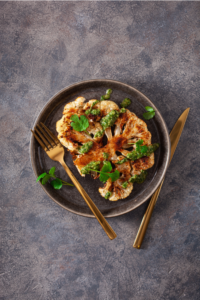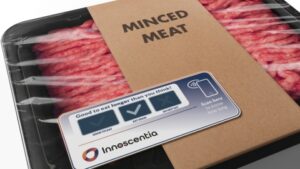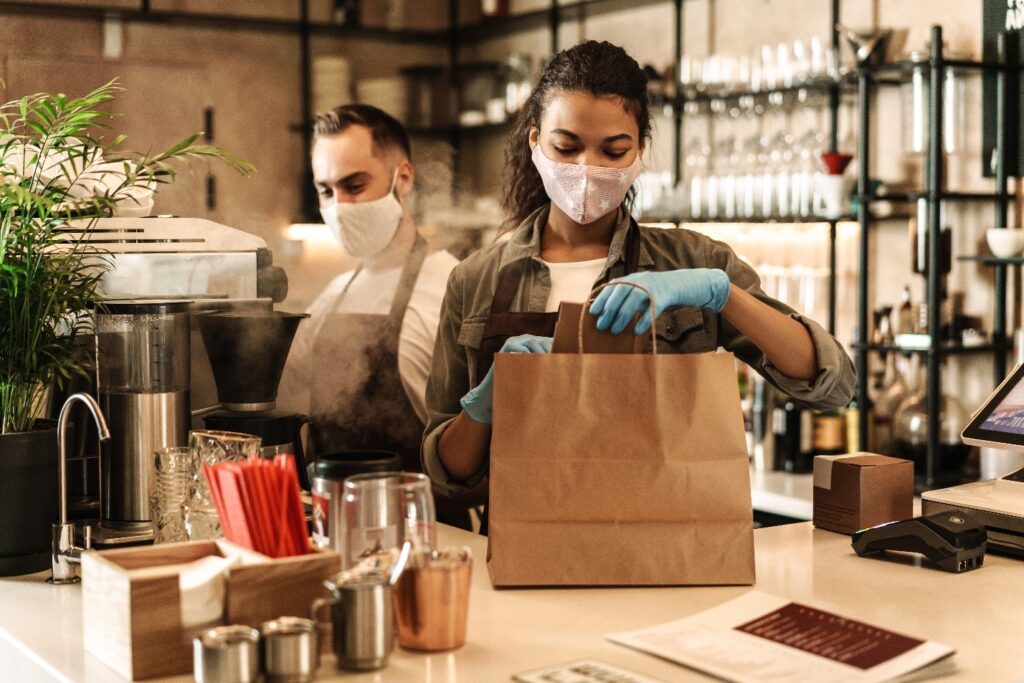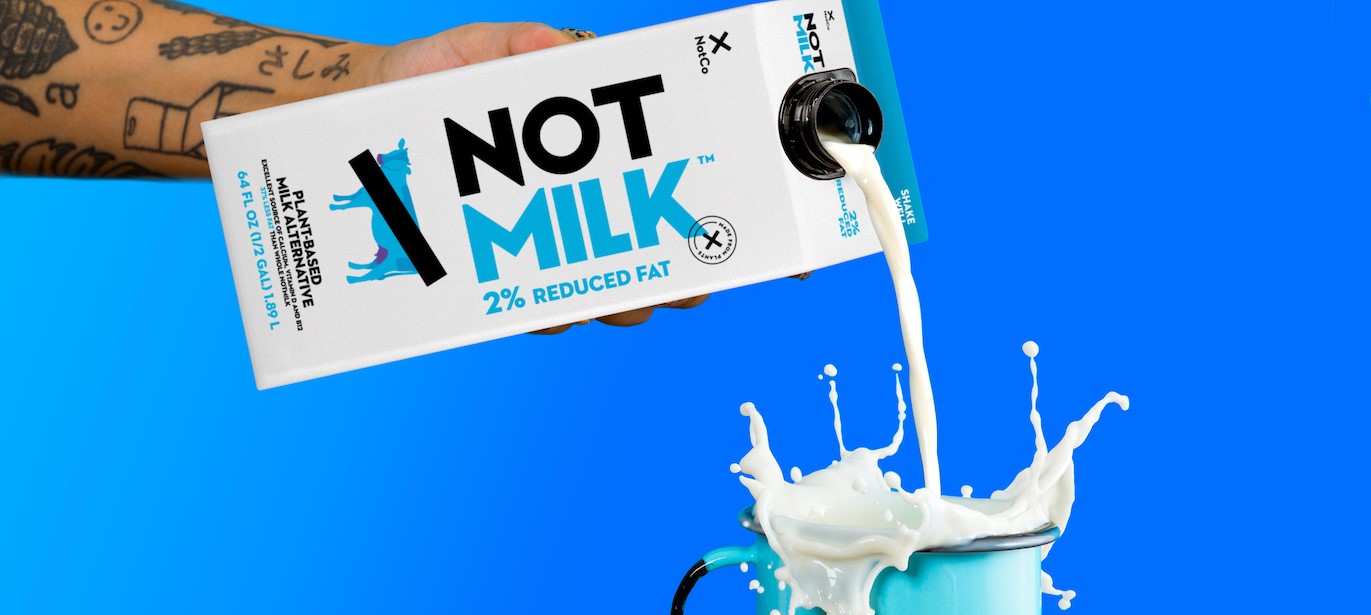2020 has been a year full of unexpected events and changes for the food and beverage industry. Some challenges included supply chain disruptions due to country-wide lockdowns, shortages of various grocery products, bankruptcy and closures of our favorite local restaurants and moving from in-restaurant dining experiences to enjoying food flavors at home.
The pandemic has changed a lot of norms and traditions but also accelerated various technological innovations and expectations to adapt to these unprecedented times.
We have seen a lot of changes happen to the food and beverage industry that have played a role in the upcoming trends of 2021.
Here are the top four food and beverage industry trends to look out for in 2021. Xtalks spoke with experts from the food and beverage industry to get their take on what 2021 has in store for this sector.
1. Plant-Forward
The trend towards plant-based foods has become a global phenomenon. Plant-based products are available worldwide for consumers who are looking to reduce their meat intake, are health conscious, live by a certain diet or simply want to live sustainably. The plant-based market is growing in the mainstream food market and will expand into various categories in 2021.
Plant proteins, milk alternatives, meat alternatives, bee-less honey, lab-grown meat and more are all kinds of innovations we have seen in 2020, but studies show that plant-based trends are still on the rise as new technologies are developed to cater to this market.
The Innova Consumer Survey 2020 indicated that the top four reasons for considering a plant-based diet include, health, diet variety, sustainability and taste.
 Xtalks spoke with leading expert Brad McKay, former CEO of Healthcare Food Services, an organization that provides meals to Canadian primary care facilities, about how he thinks the plant-based trend will evolve in the coming year, and into the future.
Xtalks spoke with leading expert Brad McKay, former CEO of Healthcare Food Services, an organization that provides meals to Canadian primary care facilities, about how he thinks the plant-based trend will evolve in the coming year, and into the future.
“When speaking, I tend to look at the next 30 years rather than solely to the next year,” says McKay. “Thirty years from now, you’ll see that the red meat or traditional animal-grown meat will have declined to a very small portion of meat consumption. You will see the plant ingredients still being substantial, but you will see huge growth in cell-based meat.
“What’s driving the plant-based industry is two things: one is an interest in better health. So, there’s a belief among consumers that plant-forward consumption is a better source than animal meat. But the bigger driver is going to be environmental factors. The planet can no longer sustain the amount of animal production required to feed humans.”
McKay goes on to cite statistics from Yuval Noah Harari, a noted historian and author of two best-selling books on the future of humanity. Harari says there are currently 300 million tons of humans on the plant, with 700 million tons of animals raised to feed us.
“That’s a huge footprint on the planet,” says McKay. “And if we’re ever going to be able to break the back of global warming and what humans are doing to the planet, we have to get off of growing animals to feed us.”
2. Personal Nutrition
COVID-19 has changed the way we buy and consume food. Part of this change includes the idea of personalized nutrition to fit a specific lifestyle. Being able to customize lifestyles has become increasingly common and will grow in popularity over the next year. The Innova Consumer Survey 2020 showed that “64 percent of global consumers have found more ways to tailor their life and products to their style, beliefs and needs.”
 Technological advances and the expanding choice in foodservice are combining to help consumers adopt a more individual approach to eating. “Technology breakthroughs have provided consumers with a variety of personalized nutrition options,” says Chang Liu, market analyst at Innova Market Insights. “Understanding individual needs based on data collected from genetic analysis, body analysis and personal preferences will make personalized nutrition products more tailored,” she adds.
Technological advances and the expanding choice in foodservice are combining to help consumers adopt a more individual approach to eating. “Technology breakthroughs have provided consumers with a variety of personalized nutrition options,” says Chang Liu, market analyst at Innova Market Insights. “Understanding individual needs based on data collected from genetic analysis, body analysis and personal preferences will make personalized nutrition products more tailored,” she adds.
When asked about his opinions on personalized nutrition, and how we’re moving forward in this sphere, McKay cited the aging population as a key driver of this trend.
“In a general sense, people are going to be more concerned with nutrition, simply because of the age of the population,” says McKay. “The younger demographics are concerned about nutrition. They want to eat well, and I think, generally, all of us feel that we want to eat better, but it’s more of an imperative for those at the higher end of the age scale.
“As you hit your 40s and 50s and 60s, you start to realize your mortality and [think], ‘oh I better start eating better.’ It becomes more important for you to eat more healthily as you age. It’s that demographic that I think is driving some of this broad interest in healthier and nutritional eating.”
McKay also agrees that transparency in the food that will eat will also be a part of the 2021 personalized nutrition trend.
“Yes, people are more knowledgeable and want to know where their food came from,” says McKay. “Transparency goes back to, ‘Where did I grow this raw material?’ If it’s an apple in an apple pie, ‘What orchard did it come from?’ Therefore, technology is allowing us to get further back to the source of the raw materials, and that’ll continue to be important.
In addition to food traceability, social responsibility will also play a role in the types of food products consumers want to buy in 2021, particularly among millennials who are entering their prime years as consumers. The emphasis will be on fair trade policies, ethical treatment of livestock and sustainable fishing practises, and the industry will have to evolve in response.
“You’ll see people be more interested in the social contract that the suppliers have. Did it come from a Fairtrade nation? Do they treat their farmers well? Does it come from a politically stable place? People will be more concerned with the ethics around how their products are sourced.”
3. New Omnichannel Distribution
Omnichannel distribution became increasingly popular over the past few months, but many believe this will continue to grow in 2021. Consumers can eat what they want, when and where they want it. This is increasingly convenient, but also allows for richer experiences and provides accessible indulgence.
Foodservice and retail domains are increasingly overlapping. Traditional dining is being phased out due to COVID-19, and the popularity of staying in and cooking at home is increasing. This is driving the concept of convenient meal kits and starter kits using sophisticated ingredients and new food experiences and allowing companies that provide these services to expand.
The Innova Consumer Survey 2020 found 46 percent of consumers believe that restaurant-branded products are a convenient way to attain the restaurant experience and flavors at home.
Restaurant delivery is also growing as consumers can now directly access many products that were only available through foodservice.
Food
McKay echoes the survey results, but shares his predictions that meal kits, in their current form, might not be here to stay in the coming year.

“We used to have one broad way of eating: a food manufacturer would ship a product to a retailer and then you would go to the retail store, buy it and bring it home,” says McKay. “That’s all being exploded and ‘omnichannel’ is a great way to describe it.
We’re moving from brick and mortar to home delivery; therefore, the direction of travel is different. Furthermore, people want convenience. The growth of meal kits is robust and strong, and certainly legitimate and helpful. But in my view, meal kits are just a hybrid. They’re only halfway towards a fully cooked meal going to the home.
Many technologies have gone through this hybrid phase, such as cars and steamships. Thus, meal kits are the hybrid, they’re an in-between step, in my view, at least, and meals will be the end goal.”
According to McKay, many factors will drive the trend towards pre-prepared meal delivery, including a grow consumer market that has neither the time nor the skills necessary to prepare their own food at home.
“The meals will come from standalone meal companies as we have them now, delivering meals to the home, or they may come from a restaurant or foodservice operation in an Uber Eats or Skip the Dishes kind of a format,” predicts McKay. “All those things are growing based on convenience; it’s far cheaper to cook your food from groceries, but people just don’t have the time. Increasingly, they won’t have the skills to do that.
The grocery sector is also being shaped by the omnichannel distribution trend, which is expected to grow in 2021.
“Furthermore, grocery stores are moving online as well,” says McKay. “All the big player companies are moving to protect their businesses and are turning to online sales. We’re starting to see this manufacturer-to-consumer (M2C) [distribution] happening.
“Your meals increasingly aren’t going to come in the trunk of your car, they’re going to come in a box to your doorstep.”
Retail
Local businesses are also turning to online sales and using delivery services to get their products to consumers to replace conventional visits to brick and mortar shops. This change has altered the way consumers want to receive their goods and products.
Due to COVID-19, businesses have been compromised and shut down, causing many to claim bankruptcy. However, many are trying to conquer this issue, to allow for life, as usual, to come back better than ever.
 Dlvvr, a Toronto-based, same-day delivery start-up, is one initiative that launched during this pandemic. Due to the high demand for online shopping, local and international delivery services
Dlvvr, a Toronto-based, same-day delivery start-up, is one initiative that launched during this pandemic. Due to the high demand for online shopping, local and international delivery services
have caused major delays for companies that local communities relied on.
In an era where Uber Eats and Skip the Dishes made same-day food deliveries possible, consumers and businesses want to achieve the same omnichannel distribution expectations for their favorite local shops.
Xtalks spoke with Aly Moursy, co-founder and CEO of Dlvvr, about the importance of a delivery service that provides omnichannel distribution during this pandemic and in future years. He said that the business was inspired by a personal experience.
“When the pandemic started, I ordered a product online from a local business, and it took a major Canadian carrier 19 days to deliver it to me. I thought to myself, why isn’t there an on-demand same-day delivery option for retail businesses, similar to the food and grocery industry, like Uber Eats and Skip the Dishes. I did my research and found that it didn’t exist. So, my co-founders and I decided to build it ourselves,” says Moursy.
Moursy explains that local businesses need to be able to offer more prompt delivery to stay competitive with e-commerce giants, like Amazon.
“Local, on-demand, same-day or next-day delivery in the post-pandemic world is make-or-break for many local businesses,” says Moursy. “Local businesses were forced to shut-down their in-store shopping because of COVID-19 restrictions. When this happened, their main focus shifted to selling online since most people were unable to leave their homes or shop in brick-and-mortar stores.
The issue with shopping online is that major Canadian carriers are suffering from extreme delays due to high demands because of COVID-19, which negatively impacted local businesses since their only shipping option for local delivery is extremely delayed. This causes the regular consumer to shop from big international online stores, such as Amazon, due to their shipping speed.
Same-day delivery empowers Canadian local businesses to compete with companies like Amazon by offering their customers an even faster delivery method.”
Based in Toronto, Dlvvr has had a positive effect on many local businesses.
“Dlvvr increased businesses’ online sales conversion rates,” says Moursy. “When customers see a shipping option that tells them that they will receive their items same-day or next-day with the date, it increases their chances of shopping with that specific business.
Additionally, it increased the rate of recurrent buyers. When a customer buys from a merchant and receives their items on the same-day or next-day, they end up going back to the merchant because of the excellent customer experience. Since launch, we’ve seen a customer order from the same store four times in 10 days, and in all four times, Dlvvr was their shipping option.”
4. Technology
Technology has accelerated drastically since the start of 2020 and is moving to develop even further in 2021.
Turning to a paper menu has been phased out and scanning QR codes with our phones has become the new norm. Paying with our digital wallets has been popular but now companies such as Ready are making their way across restaurants nationwide. This service allows guests to view the menu, order, pay, review and redeem points all on their phones without the need to download an application.
Furthermore, as the pandemic hit, businesses were compromised because of manufacturing decline. Factories could no longer have people working to eliminate the spread of the coronavirus. Now, more than ever, AI is a necessity to keep processing and manufacturing ongoing.
McKay says, “Going forward, it’ll allow us to run smarter plants, quicker and easier, optimize our resources and we won’t be forced to have long production runs…AI will allow you to have economical production runs at smaller run sizes and that’s important because the world is changing.”
 Moreover, the world is becoming more conscious of their buying habits and waste, in an attempt to be sustainable consumers. Companies such as Ynvisible and Innoscentia believe there’s more that they can do to accommodate and conquer the food waste problem using technology.
Moreover, the world is becoming more conscious of their buying habits and waste, in an attempt to be sustainable consumers. Companies such as Ynvisible and Innoscentia believe there’s more that they can do to accommodate and conquer the food waste problem using technology.
Xtalks spoke with Erik Månsson, the CEO of Innoscentia, about their new innovative technology that allows manufacturers, distributors and consumers to eliminate food waste using real-time digital expiry labels.
“I think that trend is already here,” says Månsson, when asked about the power of digital food expiry labels to reduce food waste. “We can already see, not only with our customers and the people that we meet, but as a global trend today, that people want to eat more sustainably and become aware of the waste that is produced in the food industry.
We’ve been doing this for about five years, and it’s a different climate when it comes to all of these questions today, compared to what it was five years ago. Therefore, the market is adjusting and maturing, I would say. And there will be a lot of these initiatives coming up in 2021; that’s my prediction.”
Overall, COVID-19 has caused changes to traditional norms in the food and beverage industry. Predictions for food industry trends in 2021 include plant-forward products, personalized nutrition, omnichannel distribution and technology to drive the year towards new innovative products and creative solutions to complex problems.
2021 will be a year worth reviewing due to the unexpected changes brought on by the pandemic in 2020. Despite the emergence of COVID-19, and its effects on the food supply chain, there is a lot to highlight during this unprecedented year. Learn more about the past and the future of the food and beverage industry by visiting 2020 Year in Review: Top Five Food and Beverage Trends.












Join or login to leave a comment
JOIN LOGIN